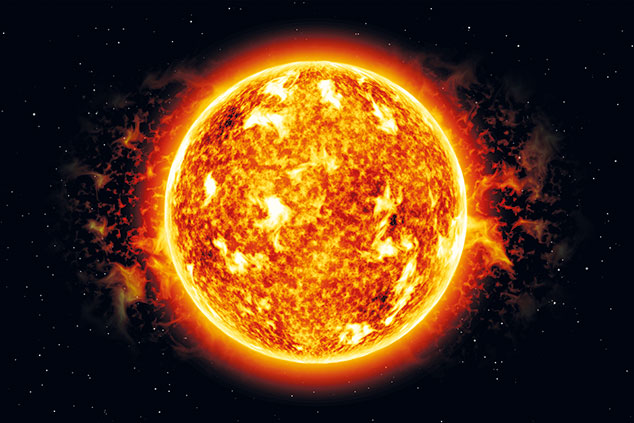
What has happened?
The UK government announced last week that it is to invest £220m to enable the UK Atomic Energy Authority (UKAEA) to design a nuclear fusion power station at the Culham Science Centre in Oxfordshire, the home of a joint European fusion research programme.
The money should facilitate the completion of a design for a reactor called the Spherical Tokamak for Energy Production (STEP) by 2024.
This in turn would be a step towards the projected building of a commercial-scale nuclear fusion plant by 2040. Such an achievement – here or elsewhere – would have the revolutionary potential of providing unlimited clean, safe and carbon-free energy for the rest of time.
Is that timescale realistic?
Almost certainly not. There is a running joke in the energy sector that the holy grail of successful nuclear fusion is just 30 years away – and always will be. Since 1953 the US government alone has spent around $30bn on fusion research. For decades, expectations of an imminent breakthrough have been thwarted.
But Steven Cowley, director of the Princeton Plasma Physics Laboratory and ex-head of the UKAEA, says technological advances in supercomputing and complex modelling mean that fusion really is now within sight.
What exactly is nuclear fusion?
All existing nuclear power (as well as the bombs dropped on Hiroshima and Nagasaki) is based on “nuclear fission”. This refers to the fission – the splitting – of the unstable nucleus of a single atom into two, releasing large amounts of energy.
Nuclear fusion is a radically different process. It means the “fusing” together of two nuclei from two separate lighter atoms to create a single new nucleus of a heavier atom – a process that releases a vast amount of excess energy.
A century ago scientists worked out that nuclear fusion is the process that powers the sun and stars, making life possible. In 1920, Arthur Eddington, an English astrophysicist, hypothesised (correctly) that the sun’s energy was released by the nuclei of two hydrogen atoms fusing to form the nucleus of a helium atom.
How does that release energy?
It’s because the mass of each newly formed helium nucleus is a bit less than the sum of the two hydrogen nuclei from which it was fused. Ordinarily, the positive charges of two hydrogen nuclei would repel each other, explains Jon Asmundsson of Bloomberg.
But amid incredibly high temperatures and pressure, the nuclei can get close enough “for the attraction of the extremely short-range but powerful nuclear force to kick in, joining them into a single helium nucleus” – which has a bit less mass.
And, in line with Einstein’s famous equation, that difference in mass is released as energy. “We sometimes dream”, said Arthur Eddington, “that man will one day learn how to release it… The store is well nigh inexhaustible.”
How are humans trying to tap it?
By creating extreme temperatures and pressure within a nuclear reactor, trying to get hydrogen nuclei to fuse, capturing the released energy – and finding a way of doing so that uses up less energy that it releases. Since the 1950s, scientists have identified the most efficient fusion reaction to be between two isotopes of hydrogen called deuterium and tritium.
To achieve fusion, you need a very high temperature (in the order of 150 million degrees C), which means the electrons are separated from nuclei and a gas becomes a plasma, potentially enabling fusion.
Second, you need sufficient plasma particle density so that lots of collisions do in fact occur.
And third, you need sufficient confinement time and a way of holding the plasma in place. All ongoing attempts to achieve fusion are efforts to solve all three problems simultaneously, while capturing the released energy in an efficient manner.
What are the principal solutions?
Most scientists working on fusion base their efforts on a vessel known as a tokamak, invented in the Soviet Union in the 1950s. Tokamaks are reactors shaped like a doughnut or bagel (ie, a “torus”) and use powerful magnetic fields to hold the plasma in place (“magnetic confinement”).
In southern France, 35 nations are collaborating on building the biggest tokamak yet built, the Iter (originally the International Thermonuclear Experimental Reactor). It will have one million components and will cost over $20bn. It is a very long-term project: Iter hopes to commence fusion experiments in 2035.
Only from 2045 might engineers start to design commercial power stations based on Iter’s results. The UK’s smaller STEP project is also tokamak-based.
What about the private sector?
Significant private-sector players who are also pursuing the magnetic confinement route include Commonwealth Fusion Systems (CFS), a spin-out from MIT’s plasma physics lab. Another is Tokamak Energy, a spin-out from the UKAEA’s Culham lab.
Tokamaks are “not the only reactors in town” however, says The Economist. In Vancouver, General Fusion is pursuing what it calls “magnetised target fusion”, which involves firing the particle plasma into a spherical reaction chamber, and generating a confining magnetism from the movement of the spinning particles.
TAE Technologies, in California, is also working on a self-confining plasma, but using normal hydrogen and boron (rather than deuterium and tritium) and a long cylindrical reactor (called Norman).
And First Light Fusion, a spin-out from Oxford University, is working on a different reactor design and a projectile method originally inspired by the pistol shrimp, a crustacean that stuns prey by snapping its long claws shut so rapidly it creates cavitation voids in the water. Watch this space.